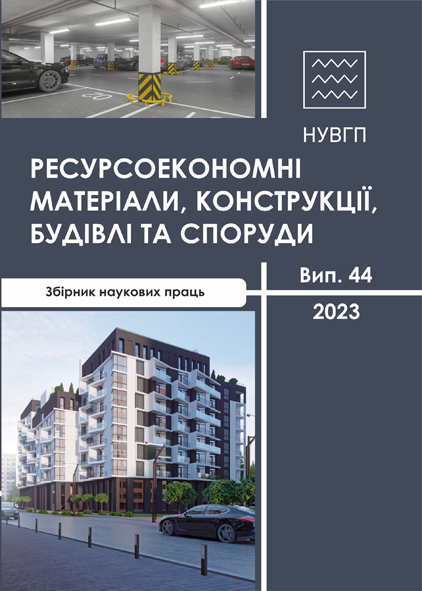MORTAR ON MECHANOACTIVATED MIXED PORTLAND CEMENT
DOI:
https://doi.org/10.31713/budres.v0i44.10Abstract
Conducted studies of the physical and mechanical properties of cement and hardening compositions based on it have shown that mechanical activation of the binder in a rotary counterflow mill causes acceleration of structure formation processes. An increase in the rate of hardening processes of the binder is expressed in the intensification of hydroformation processes, which is reflected in the acceleration of setting times, the kinetics of exothermic heating and an increase in the degree of hydration. This allows us to conclude that the proposed mechanism of mechanical activation of a mixed binder (cement and quartz sand) should be attributed to phenomena associated with the manifestation of activation of the surface of particles of both cement and quartz sand.
The mechanochemical activation of Portland cement, as well as Portland cement with the addition of quartz sand in an amount from 10 to 50% of the cement mass, made it possible to optimize both the activation period of the mixed binder (300 sec.) and the amount of quartz sand in it (20%). To determine the influence of the cement-sand ratio X1 - (from 1:3 to 1:1), the amount of superplasticizer S-3 X2 - (0.75±0.75%) and the amount of microsilica X3 - (5±5%) on strength mortar under compression at 28 days of age, a three-factor D-optimal mathematical plan was used. The values of the coefficients for varying factors indicate that the consumption of mechanically activated binder has the greatest influence on the strength of the mortar. The next most important influence on the strength of the solution is the consumption of superplasticizer S-3. Microsilica has a slight effect on the compressive strength of the mortar (the increase in strength does not exceed 8–10% at 10% of its content in the binder). The combined effect of mechanical activation of the mixed binder (mortar composition 1:1), superplasticizer S-3 (1.5%) and microsilica (10%) ensures the production of a mortar with a compressive strength of 65 MPa, which is more than 60% higher than the strength of the mortar with a mixed binder that was not subject to mechanical activation .
For a mortar of similar age with a lower consumption of mixed cement (mortar composition 1:3), mechanical activation of the binder in the presence of 1,5 % C-3 additive ensures an increase in the compressive strength of the mortar from 21 MPa (non-mechanically activated binder; C-3 = 0 %) to 39 MPa.

